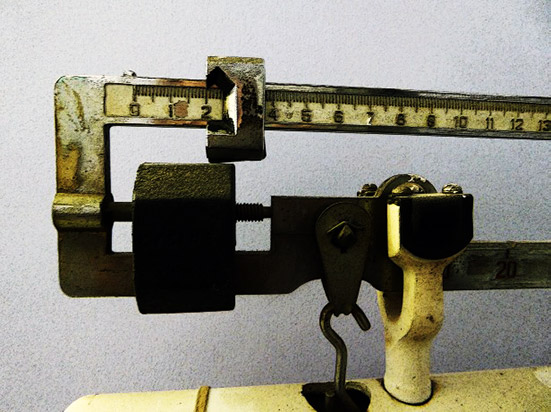There are many different muay thai fight promotions with slightly different weight classes in pounds and kilograms. Here is a compiled list of the weight classes for major organizations, so you don’t get caught missing weight.
These classes are used at international promotions from Thailand to the USA, UK, Europe, Canada, and Australia and apply to female and male athletes.
In this Article
Weight Divisions by Thai Boxing Organization
World Boxing Council (WBC) Muaythai
| Mini Flyweight | 105 lb (47.627 kg) |
| Light Flyweight | 108 lb (48.988 kg) |
| Flyweight | 112 lb (50.802 kg) |
| Super Flyweight | 115 lb (52.163 kg) |
| Bantamweight | 118 lb (53.524 kg) |
| Super Bantamweight | 122 lb (55.338 kg) |
| Featherweight | 126 lb (57.153 kg) |
| Super Featherweight | 130 lb (58.967 kg) |
| Lightweight | 135 lb (61.235 kg) |
| Super Lightweight | 140 lb (63.503 kg) |
| Welterweight | 147 lb (66.678 kg) |
| Super Welterweight | 154 lb (69.853 kg) |
| Middleweight | 160 lb (72.575 kg) |
| Super Middleweight | 168 lb (76.204 kg) |
| Light Heavyweight | 175 lb (79.379 kg) |
| Cruiserweight | 190 lb (86.183 kg) |
| Super Cruiserweight | 210 lb (95.254 kg) |
| Heavyweight | 230 lb (104.326 kg) |
World Professional Muay Thai Federation (WPMF)
| Pinweight | 103 lb (46.720 kg) |
| Mini Flyweight | 106 lb (48.081 kg) |
| Light Flyweight | 109 lb (49.442 kg) |
| Flyweight | 112 lb (50.802 kg) |
| Super Flyweight | 115 lb (52.163 kg) |
| Bantamweight | 118 lb (53.524 kg) |
| Super Bantamweight | 122 lb (55.338 kg) |
| Featherweight | 126 lb (57.153 kg) |
| Super Featherweight | 130 lb (58.967 kg) |
| Lightweight | 135 lb (61.235 kg) |
| Super Lightweight | 140 lb (63.503 kg) |
| Welterweight | 147 lb (66.678 kg) |
| Super Welterweight | 154 lb (69.853 kg) |
| Middleweight | 161 lb (73.028 kg) |
| Super Middleweight | 168 lb (76.204 kg) |
| Cruiserweight | 175 lb (79.379 kg) |
| Super Cruiserweight | 190 lb (86.183 kg) |
| Heavyweight | 210 lb (95.254 kg) |
| Super Heavyweight | 265 lb (120.202 kg) |
International Kickboxing Federation (IKF) Weight Classes
| Mini Flyweight | 105 lb (47.62 kg) |
| Junior Flyweight | 108 lb (48.99 kg) |
| Flyweight | 111 lb (50.35 kg) |
| Junior Bantamweight | 114 lb (51.71 kg) |
| Bantamweight | 118 lb (53.52 kg) |
| Junior Featherweight | 122 lb (55.34 kg) |
| Featherweight | 126 lb (57.15 kg) |
| Junior Lightweight | 130 lb (58.97 kg) |
| Lightweight | 135 lb (61.24 kg) |
| Junior Welterweight | 140 lb (63.5 kg) |
| Welterweight | 147 lb (66.68 kg) |
| Junior Middleweight | 154 lb (69.85 kg) |
| Middleweight | 161 lb (73.03 kg) |
| Super Middleweight | 168 lb (>76.2 kg) |
| Light Heavyweight | 175 lb (79.38 kg) |
| Super Light Heavyweight | 182 lb (82.55 kg) |
| Cruiserweight | 190 lb (86.18 kg) |
| Heavyweight | 210 lb (95.3 kg) |
| Super Heavyweight | No weight limit |
World Thai Boxing Association (Junior Amateur and Adult)
| Junior Pin Weight | 47 lb (21.36 kg) |
| Junior Atom Weight | 52 lb (23.64 kg) |
| Junior Straw Weight | 57 lb (25.91 kg) |
| Junior Fly Weight | 62 lb (28.18 kg) |
| Junior Bantam Weight | 67 lb (30.45 kg) |
| Junior Feather Weight | 72 lb (32.73 kg) |
| Junior Light Weight | 77 lb (35 kg) |
| Junior Welter | 77 lb (35 kg) |
| Junior Middle | 87 lb (39.55 kg) |
| Junior Cruiser | 92 lb (41.82 kg) |
| Junior Heavy | 97 lb (44.09 kg) |
| Girls/Boys Pin Weight | 102 lb (46.36 kg) |
| Girls/Boys Atom Weight | 107 lb (48.64 kg) |
| Girls/Boys Straw Weight | 112 lb (50.91 kg) |
| Girls/Boys Fly Weight | 117 lb (53.18 kg) |
| Girls/Boys Bantam Weight | 122 lb (55.45 kg) |
| Girls/Boys Feather Weight | 127 lb (57.73 kg) |
| Girls/Boys Light Weight | 132 lb (60 kg) |
| Girls/Boys Super Light Weight | 137 lb (62.27 kg) |
| Girls/Boys Light Welter | 142 lb (64.55 kg) |
| Girls/Boys Welter Weight | 147 lb (66.82 kg) |
| Girls/Boys Super Welter | 153 lb (69.55 kg) |
| Girls/Boys Light Middle | 159 lb (72.27 kg) |
| Girls/Boys Middle Weight | 165 lb (75 kg) |
| Girls/Boys Super Middle | 172 lb (78.18 kg) |
| Girls/Boys Light Heavy Weight | 179 lb (81.36 kg) |
| Girls/Boys Light Cruiser | 186 lb (84.55 kg) |
| Girls/Boys Cruiser Weight | 195 lb (88.64 kg) |
| Girls/Boys Heavy Weight | 215 lb (97.73 kg) |
| Girls/Boys Super Heavy | 215 lb (97.73 kg) |
| Pin Weight | 102 lb (46.36 kg) |
| Atom Weight | 107 lb (48.64 kg) |
| Straw Weight | 112 lb (50.91 kg) |
| Fly Weight | 117 lb (53.18 kg) |
| Bantam Weight | 122 lb (55.45 kg) |
| Feather Weight | 127 lb (57.73 kg) |
| Light Weight | 132 lb (60 kg) |
| Super Light Weight | 137 lb (62.27 kg) |
| Light Welter Weight | 142 lb (64.55 kg) |
| Welter Weight | 147 lb (66.82 kg) |
| Super Welter Weight | 153 lb (69.55 kg) |
| Light Middle Weight | 159 lb (72.27 kg) |
| Middle Weight | 165 lb (75 kg) |
| Super Middle Weight | 172 lb (78.18 kg) |
| Light Heavy Weight | 179 lb (81.36 kg) |
| Light Cruiser Weight | 186 lb (84.55 kg) |
| Cruiser Weight | 195 lb (88.64 kg) |
| Heavy Weight | 215 lb (97.73 kg) |
| Super Heavy Weight | 215 lb (97.73 kg) |
ONE Championship Muay Thai Weight Classes
| Atomweight | 114.8 lb (52.2 kg) |
| Strawweight | 124.7 lb (56.7 kg) |
| Flyweight | 134.6 lb (61.2 kg) |
| Bantamweight | 144.8 lb (65.8 kg) |
| Featherweight | 154.7 lb (70.3 kg) |
| Lightweight | 169.6 lb (77.1 kg) |
| Welterweight | 184.5 lb (83.9 kg) |
| Middleweight | 204.6 lb (93.0 kg) |
| Light Heavyweight | 224.6 lb (102.1 kg) |
| Heavyweight | 264.5 lb (120.2 kg) |
Why Do Weight Classes Exist?
Weight classes exist to keep fighters safe. Their intent is to have fighters compete against other competitors who are at or near the same average height and body weight.
It makes sense when you think about the physics.
Force = mass * accelerationIt just wouldn’t make sense to have featherweights competing with heavyweights. It’d be incredibly dangerous for the smaller fighter. They’d get destroyed.
Why Do Muay Thai Fighters Cut Weight?
As I wrote above, size does matter. Professionals usually weigh heavier than their fight weight. This is what people mean when they say so-and-so “walks around” at x lbs. A fighter can cut lots of water weight before weighing in and then rehydrate another 10lb+ and have a serious bodyweight advantage come fight time.
In Thailand, the practice of weight cuts is partially limited by same day weigh ins. Skilled champions like Saenchai even give up the weight advantage to make a fight more evenly matched. He has given up to 15lb+ to opponents by moving up weight classes.
Many fighters cut weight mainly because other fighters cut weight too, and you don’t want your opponent having too much of an advantage.
Some promotions like ONE Championship use walking weight to determine weight divisions. Fighters are checked periodically during their fight camps, and daily during fight week. They also check urine samples for hydration. This ensures a safe weight cut and fair competition.
Should Amateurs Cut Weight for a Fight?
In my personal opinion, if you’re just starting out and not getting paid to fight then it’s not worth it to cut weight. Cutting weight is hard, grueling work.
If you’re in an elite class for a tournament, or are thinking about going pro one day then yeah consider making the cut. Just know that it’s going to suck.
How to Cut for a Fight
Cutting weight is serious business and takes weeks to months of preparation. Typically the amount of water you can safely cut depends on the time between weigh ins and the actual bout.
Weigh-ins are usually the day before or the morning of the fight. This only gives you 12-24 hours to hydrate up.
Professionals have teams who help get them fight-ready. This team usually includes a strength coach and a dietician/nutrition expert in addition to their trainers. As an amateur, it might be hard to hire a professional nutritionist, so you’ll have to manage your caloric intake and macronutrients by yourself on top of everything else.
Traditional methods of water cutting include sodium manipulation, sweating it out in the sauna or with a sauna suit, taking hot baths in epsom salts, wearing sweats to bed, and chewing gum and spitting. It’s a miserable experience.
After putting in all that work, what happens if you miss weight? You might get additional time to shave off a half-pound. Sometimes the promoter will still let the fight go ahead, but you lose a percentage of your purse. Other organizations won’t let you fight at all.
What Does Pound for Pound Mean?
In muay thai, just like boxing, pound-for-pound is a ranking system that’s adjusted for weight classes. Since it’s dangerous to have fighters in different weight classes compete, the pound-for-pound rankings are used to compare different fighters despite their weight.
Analysts come up with pound-for-pounds rankings with different criteria. They are subjective and mostly theoretical.
Make sure to check out our beginner’s guide to muay thai for more info on the sport.





